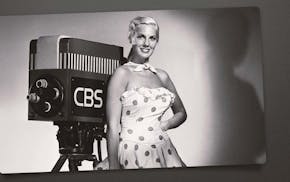Even the most casual of drinkers is likely to have a bottle of Angostura bitters stashed somewhere in the kitchen.
But celery bitters? Blackstrap? Mexican mole? Memphis barbecue?
They're all out there, as are bitters meant to conjure specific drinks (Tiki), cultures (Creole; Thai; Moroccan), people (cocktail pioneer "Professor" Jerry Thomas) and even places (Boston). And, when used properly, the effects are anything but bitter.
"The word 'bitter' is an unfortunate name for the product," says Joe Fee, fourth-generation owner of Fee Brothers, established in Rochester, N.Y., in 1863. Fee Bros. began producing its flagship Old Fashion (Aromatic) bitters in the 1950s and now sells a dozen varieties of the alcohol and herb-based flavoring agents, including Aztec chocolate, West Indian orange and plum.
"Why in the world would anybody willingly put something called bitters into a drink and hope for a good outcome?" Fee asks. "Really, it all comes down to getting the public to recognize that there are taste receptors in the mouth: You've got salty, you've got sweet, you've got sour and you've got bitter. You really want anything that you're eating or drinking to tickle all of those, or it's going to taste shallow."
Most times, if a drink's balance is not quite right, bitters will do the trick. "Bitters are the cure-all for your mixing woes," says Fee.
They are essentially the allspice of your home bar, which is why they're worth stocking. Not to mention, they're cheap, take up little space, and a few drops go a long way.
History of flavor
The original cure-all was the gentian root-based Angostura, developed in the 1820s by Dr. Johann Gottlieb Benjamin Sieger as a tonic to soothe seasickness. Manufactured in its Venezuelan namesake and exported to the British Royal Navy, Angostura was taken with a few shots of Plymouth gin, which subsequently took on a pink hue. The resulting cocktail, pink gin, crept into British bars in the mid-1800s.
Alongside the rising popularity of pink gin in England was the sazerac in New Orleans, accented with a similar gentian-based tonic: Peychaud's. But unlike Angostura, which outlived scores of other 19th-century tinctures to become a 20th-century bestseller, Peychaud's until very recently was a Louisiana anomaly.
Although the bitters industry is growing, is it relevant? Does one really need to stock grapefruit bitters in the home bar, let alone Jamaican Jerk or Burlesque? And is it necessary for bartenders to dream up their own when the market is already saturated?
As any cocktail enthusiast will tell you, yes. There's a variety for a reason. Bitters are the finishing touch that can make a good drink great.
Get bitter
If you're only buying one, start with Angostura ($8 for 4 ounces), which many mixologists swear is irreplaceable. Peychaud's ($7 for 5 ounces) is an excellent secondary. Branching out into flavors? Try orange bitters, which add excellent dimension to dark spirits.
Keep in mind that less is more with bitters. Similar to vanilla extract or any other highly concentrated flavoring agent, a little goes a long way. Two to three drops will do it. And, though bitters are a great addition, they aren't always necessary. No need to reinvent the gin and tonic, for example.
PINK GIN
Serves 1.
Also known as Gin and Bitters. For a pinker version, use Peychaud bitters instead of Angostura. From "Drink-ol-o-gy," by James Waller.
• About 1 tsp. Angostura bitters
• 3 oz. (3/8 c.) chilled dry gin
Directions
Chill the gin in the freezer for several hours before serving. Pour the bitters into a chilled cocktail glass, then slowly and carefully tilt and twirl the glass until the entire interior is coated. Discard any excess bitters. Pour in the gin.
INCOME TAX COCKTAIL
Serves 1.
Note: From "Drink-ol-o-gy."
• 11/2 oz. (3 tbsp.) dry gin
• 2 tsp. dry vermouth
• 2 tsp. sweet vermouth
• 1/2 oz. (1 tbsp.) orange juice
• 2 dashes Angostura bitters
Directions
Combine ingredients in a cocktail shaker, with ice. Shake well, and strain into a chilled cocktail glass.
Botanists are scouring the US-Mexico border to document a forgotten ecosystem split by a giant wall
Disneyland character and parade performers in California vote to join labor union
Grand champion crowned the best in pork at barbecue world championship in Memphis
CANNES DIARY: Behind the scenes of the 2024 film festival


